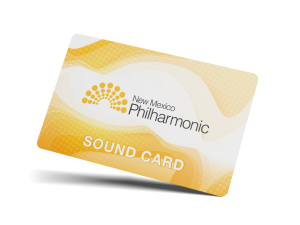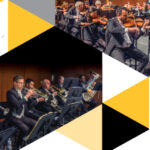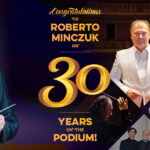Program Notes, ©2013 Lori Newman
Program Notes
Johann Sebastian Bach St. John Passion, BWV 245 (1724)
(Born 1685, Eisenach, Germany; died 1750, Leipzig, Germany)
Bach was not even the second choice for Cantor and Director of Music at Leipzig when he was up for the job in 1723. The powers that be instead wanted his good friend, Georg Philipp Telemann for the position; Telemann’s negotiations for the job fell through. They then offered the job to a seemingly endless string of composers before “settling” on Johann Sebastian Bach. The hiring committee even used the word “mediocre” when describing their new employee. Of course Bach proved them all wrong and remained at Leipzig until his death in 1750. The St. John Passion was written during Bach’s first year at Leipzig, and as one can imagine, he felt the need to put all the “naysayers” to rest who had rallied against him receiving the post. His St. John Passion seemed to be just what was needed to solidify his reputation.
Bach conducted the work’s premiere on Good Friday, April 7, 1724 at the St. Nicholas Church in Leipzig. There had been a bit of a kerfuffle regarding the location in which the premiere would take place. Bach, being new to the position, assumed that the performance would be at St. Thomas’s Church instead of St. Nicholas’s; however, Leipzig had a tradition of alternating Good Friday services between the two churches, and by the time Bach found out, the programs were printed and there was nothing to be done. Bach worried that all of his performers would not fit at St. Nicholas’s, and also feared the harpsichord was not up to his standards. The harpsichord was adjusted to suit Bach, the performers managed to fit in the choir loft for the premiere, and a printed flyer was made noting the new location so the audience would know where the performance was held.
What exactly is the definition of a Passion? A Passion outlines the last days of Jesus, often from his arrest in the Garden of Gethsemane to the crucifixion. It is especially characterized by its depiction of the brutality that Christ suffered in his last days. The form took on several guises throughout the years, but by the 17th-18th centuries, the Passion was a sacred oratorio that mainly used biblical text augmented with newly written poetry. The music was comprised of chorales, choruses, recitatives, arias, and ariosos. For his St. John Passion Bach used Chapters 18 and 19 of the Luther Bible from the Gospel According to St. John. The Evangelist’s words are unchanged from the text of the bible, and the additional poetry is written by an unknown source.
Bach wrote his Passion with an array of musical instruments at his disposal, (which explains his concern over being able to fit into the performance venue) – using all the standard instruments of the time, as well as the viola d’amore, lute, viola da gamba, oboe d’amore, and the oboe da caccia. The voices are written in four-part SATB style for the choir, and employ at least four soloists, sometimes more, depending on how the solos are divided.
The first portion of the St. John Passion concerns the events from the main characters’ points of view, namely Jesus, Pontius Pilate, Peter, and our narrator, the Evangelist. They tell us the events of the final days as they see them. The remainder is devoted to the reactions and commentary of those witnessing the events. This commentary interspersed with quotations from scripture and the heavy use of instrumental accompaniment to create the appropriate dramaturgy was a relatively new approach to the Passion genre. Bach borrows two elements from the Book of Matthew for dramatic effect in his St. John Passion: One is the weeping of Peter after his betrayal has been discovered, and the other is the earthquake following Jesus’s death.
The importance and gravitas of the Passion was not lost on Bach; he revised the work three times after its premiere, once in 1725, once around 1730 (excising the references to Matthew), and the last, in 1749 (returning the two references to Matthew). Usually a conflation of the original 1724 and the final 1749 versions is used in modern performances.




